
The governor of Oklahoma is the head of government of the U.S. state of Oklahoma. Under the Oklahoma Constitution, the governor serves as the head of the Oklahoma executive branch, of the government of Oklahoma. The governor is the ex officio commander-in-chief of the Oklahoma National Guard when not called into federal use. Despite being an executive branch official, the governor also holds legislative and judicial powers. The governor's responsibilities include making yearly "State of the State" addresses to the Oklahoma Legislature, submitting the annual state budget, ensuring that state laws are enforced, and that the peace is preserved. The governor's term is four years in length.
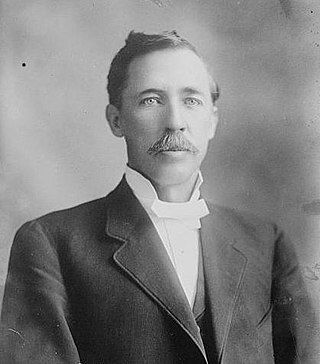
Lee Cruce was an American lawyer, banker and the second governor of Oklahoma. Losing to Charles N. Haskell in the 1907 Democratic primary election to serve as the first governor of Oklahoma, Cruce successfully campaigned to succeed Haskell to serve as the second governor of Oklahoma. As governor, Cruce was responsible for the establishment of the Oklahoma Department of Highways and the Oklahoma State Capitol. He worked hard to enforce prohibitions on alcohol and gambling, going so far as to use the state militia to stop horse racing. He was succeeded by Robert L. Williams.

The Territory of Oklahoma was an organized incorporated territory of the United States that existed from May 2, 1890, until November 16, 1907, when it was joined with the Indian Territory under a new constitution and admitted to the Union as the state of Oklahoma.
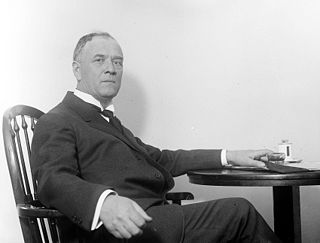
James Brooks Ayres Robertson, sometimes called J. B. A. Robertson, was an American lawyer, judge and the fourth governor of Oklahoma. Robertson was appointed by the state's first governor, Charles N. Haskell, to serve as a district judge.

Charles Nathaniel Haskell was an American lawyer, oilman, and politician who was the first governor of Oklahoma. As a delegate to Oklahoma's constitutional convention in 1906, he played a crucial role in drafting the Oklahoma Constitution and gaining Oklahoma's admission into the United States as the 46th state in 1907. A prominent businessman in Muskogee, he helped the city grow in importance. He represented the city as a delegate in both the 1906 Oklahoma convention and an earlier convention in 1905 that was a failed attempt to create a U.S. state of Sequoyah.

The 1912–13 United States Senate elections were held on various dates in various states. They were the last U.S. Senate elections before the ratification of the Seventeenth Amendment in 1913, establishing direct elections for all Senate seats. Senators had been primarily chosen by state legislatures. Senators were elected over a wide range of time throughout 1912 and 1913, and a seat may have been filled months late or remained vacant due to legislative deadlock. Some states elected their senators directly even before passage of Seventeenth Amendment. Oregon pioneered direct election and experimented with different measures over several years until it succeeded in 1907. Soon after, Nebraska followed suit and laid the foundation for other states to adopt measures reflecting the people's will. By 1912, as many as 29 states elected senators either as nominees of their party's primary or in conjunction with a general election.

The Constitution of the State of Oklahoma is the governing document of the U.S. State of Oklahoma. Adopted in 1907, Oklahoma ratified the United States Constitution on November 16, 1907, as the 46th U.S. state. At its ratification, the Oklahoma Constitution was the lengthiest governing document of any government in the U.S. All U.S. state constitutions are subject to federal judicial review; any provision can be nullified if it conflicts with the U.S. Constitution.
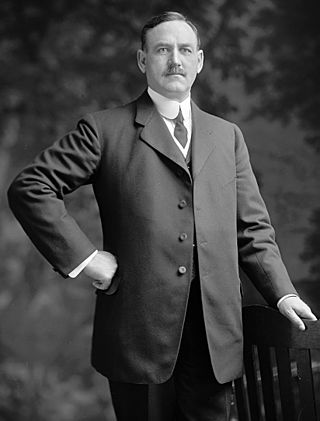
Bird Segle McGuire was an American politician, a Delegate and the last U.S. Representative from Oklahoma Territory. After statehood, he was elected as an Oklahoma member of Congress, where he served four consecutive terms. He retired from politics in 1915. He was a cousin of William Neville.

Hosea Townsend was an American attorney and politician who served two terms as a U.S. Representative from Colorado from 1889 to 1893.
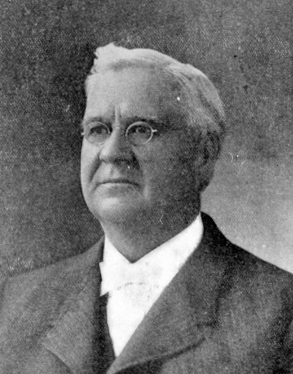
John Robert Thomas, Sr., also known as J. R. Thomas, was a U.S. representative from Illinois. He was later appointed a U.S. district judge in the Indian Territory, which then encompassed most of the eastern part of present-day Oklahoma, serving from 1898 to 1901. After statehood, he served on the Oklahoma State Code Commission which was tasked with reviewing and editing the new state laws that had been hastily put together during the rush to statehood. After returning to his private law practice, he went to the Oklahoma state prison at McAlester to interview an inmate on January 19, 1914, when he was killed by three other inmates who shot him to death while escaping prison.

George Cookman Sturgiss was a lawyer and Republican politician who served as United States Representative for West Virginia's 2nd congressional district. He was a member of the 60th and 61st United States Congresses.
The Sequoyah Constitutional Convention was an American Indian-led attempt to secure statehood for Indian Territory as an Indian-controlled jurisdiction, separate from the Oklahoma Territory. The proposed state was to be called the State of Sequoyah.
Fred P. Branson was a justice of the Oklahoma Supreme Court from 1926 to 1929, serving as chief justice from 1927 to 1929.
James R. Keaton was a justice of the Territorial Oklahoma Supreme Court from 1896 to 1898.
John H. Burford (1852–1922) was a justice of the Territorial Oklahoma Supreme Court from 1892 to 1906, serving as the final Chief Justice of that court from 1898 to 1903. After the territorial supreme court was dissolved at statehood, Burford served as City Attorney for Guthrie, Oklahoma, where he had made his home. He was the Republican Party nominee for U. S. Senator in 1914, but lost the election.
Joseph A. Gill was an American federal judge.
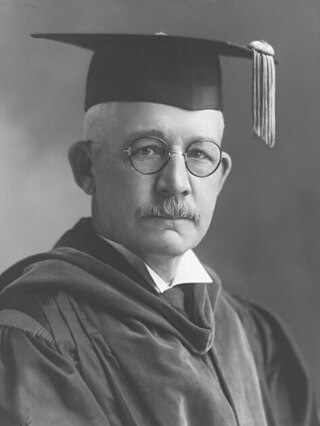
Matthew John Kane was a justice of the Oklahoma Supreme Court from 1907 to 1923, serving as chief justice from 1909 to 1911. A native of New York state, he earned a law degree at Georgetown University. Joining the Land Run of 1889 in Indian Territory, he settled in Kingfisher, Oklahoma.
Samuel W. Hayes (1875–1941) was born in Arkansas, and moved to Texas with his parents when he was a small child. He completed his basic education in Texas, then attended the University of Virginia. He apparently did not graduate, but his college experience sufficed to qualify him as a school teacher. He spent the next three years teaching in the community of Ryan in the Chickasaw Nation, then part of the Indian Territory. He also began studying law in a local law office and was admitted to the Territorial Bar in 1899.
Frank E. Gillette was one of the last judges appointed to the Supreme Court of Oklahoma Territory. He was appointed by President Theodore Roosevelt in 1902, and served until the court was abolished after statehood was granted to Oklahoma on November 16, 1907. Born in Ashtabula County, Ohio, on January 7, 1848, Gillette had moved with his parents to Emporia, Kansas when he was thirteen. After graduating from high school, he earned a degree from Kansas State Normal School then studied law and began to practice his profession in Hutchinson, Kansas in May, 1876. He moved to Kingman, Kansas and entered politics in 1882, where he was elected to the state legislature, representing Kingman County, and served for three terms. He was on the House Judiciary Committee, spending the last two years as chairman of that committee. He then was elected to the state senate and served for four years, which included serving as chairman of the Senate Judiciary Committee. At the end of his senatorial term, he moved to Oklahoma Territory and settled in El Reno where he opened a private law practice.

Thomas Henchion Doyle (1863–1949), a son of Irish immigrants who settled in Massachusetts in the early 19th century, moved to Kansas after birth with his father and four siblings after the death of his mother. He worked in railroad construction to help the family finances, became a lawyer by reading law with an experienced attorney, passed the bar exam in Ottawa, Kansas, married a woman in Kansas City, then moved to the newly formed Oklahoma Territory in 1903, where they settled in a village now known as Perry, Oklahoma.












